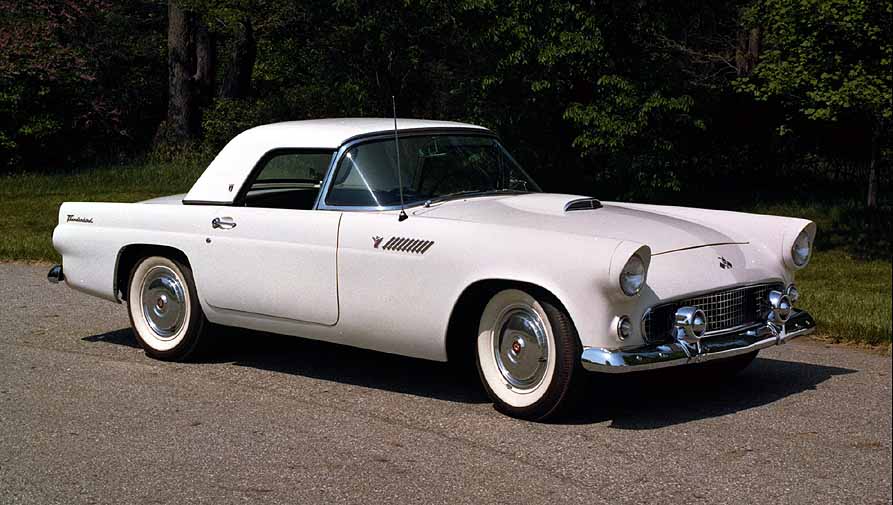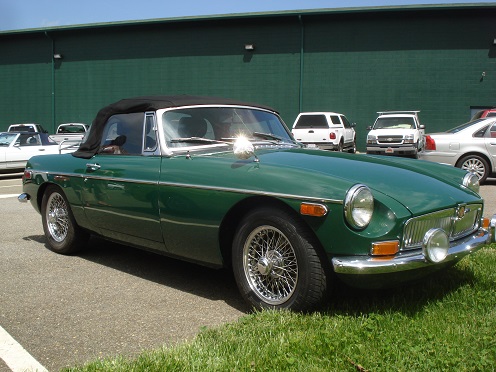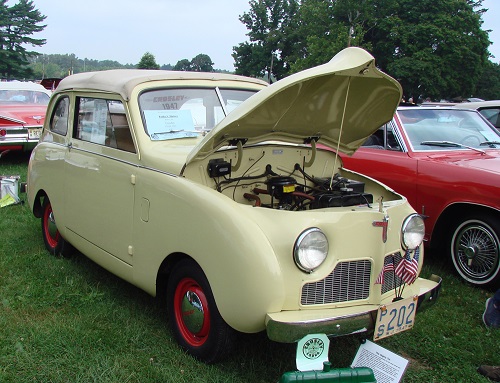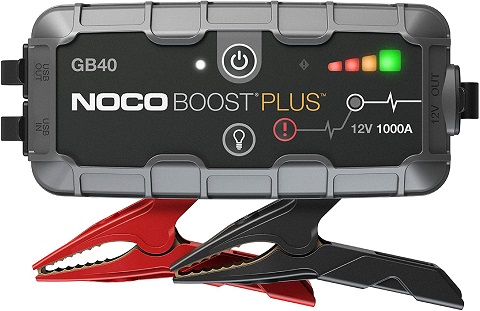Positive Ground Cars
Article by Mark Trotta
Since the beginning of automotive history, both negative and positive ground polarity have been used by car manufacturers. The fact is, electricity doesn't care how it gets from point A to point B. It can flow either positive to negative, or negative to positive. Some engineers chose one way, some chose the other.

The 1955 Ford T-Bird had positive ground polarity.
Positive-ground vehicles were once fairly common. In the mid 1920's, it was found in nearly half of then-popular cars, including Rolls Royce.
The Ford Motor Company used negative ground polarity on the Model-T, then switched to positive ground starting with the Model A, and then went back to negative ground in 1956.
Positive ground in automobiles was mostly abandoned with the introduction of 12-volt electrical systems in the fifties. 1955 was pretty much the last use of 6-volt electrics in American-made cars.
____________________________________________
____________________________________________
Most cars switched from 6 volt positive ground to 12 volt negative ground at the same time. One exception to this was the 1955 Packard, switching from 6v to 12v but not switching to negative ground.
All British vehicles imported to the U.S. after World-War-II were positive ground, and many stayed that way until the 1960's. Jaguar cars switched over in 1965.

The MGB coupe and roadster were positive ground until 1967.
All Crosley Microcars from 1939 through 1952 were 6-volt positive ground.

Polarity does not make a difference to a vehicle. There are several minor differences, including the coil terminals, which on positive ground cars are reversed (positive and negative ground coils are wound in different directions). The negative wire attaches to the power supply and the positive wire goes to the distributor/points.
Light bulbs will work with either polarity, as will starters, relays, and heater blower motors. However, the radio and ammeter gauge will not; they are polarity specific.
With the advent of the electronic age, the automotive field embraced solid-state voltage regulators, electronic ignition, transistor radios, and other upgrades. Parts such as transistors and diodes were designed with negative ground, which became standardized. Positive-ground vehicles gradually became a thing of the past.
Pros and Cons
It was, and still is, fairly common for owners to change their cars from positive to negative ground. The argument for either seems to be one of theories, with lots of opinions and few scientific facts.
____________________________________________
____________________________________________
Today, positive ground electrical systems are still found on some 6-volt industrial machines, such as tractors, generators, and others.
Diagnosing Positive Ground Electrical Systems
The simplest way to diagnose a positive-ground system is to reverse any diagnostic procedure normally used on a negative-ground system. For example, instead of starting on the "+" side of the battery and following the current that way, start at the "-" side of the battery and follow the current the other way.
Do I Need A Special Battery For My Positive Ground Car?
For use in a positive ground system, a conventional automotive battery is simply installed "backwards", meaning the positive terminal is the ground and the negative terminal is the live side.
*************************
Jump-Starting A Positive Ground Car
On positive ground cars, the cable that's attached to the positive post of the battery attaches to the engine block or chassis. The cable that attaches to the negative post of the battery attaches to the starter solenoid. The connections are opposite on negative ground cars. When charging cars so-equipped, put the positive cable on the ground and the negative on the battery or starter lug.
If you want to jump start a 6 volt positive ground car, the best way is to use another 6 volt battery of either polarity. Positive goes to positive and negative goes to negative. This makes a parallel circuit. But make sure neither car touches each other!
You can use a 12 volt battery to jump a 6-volt system with two precautions. Do not run the vehicle with the 12 volts, and have someone ready to yank the cables as soon it starts.

Read: Battery Jump Pack Review
*************************
Related Articles:
American Cars of the Fifties
Convert 6-Volt Car To 12-Volts
Points vs Electronic Ignition
Install A One-Wire Alternator
************************